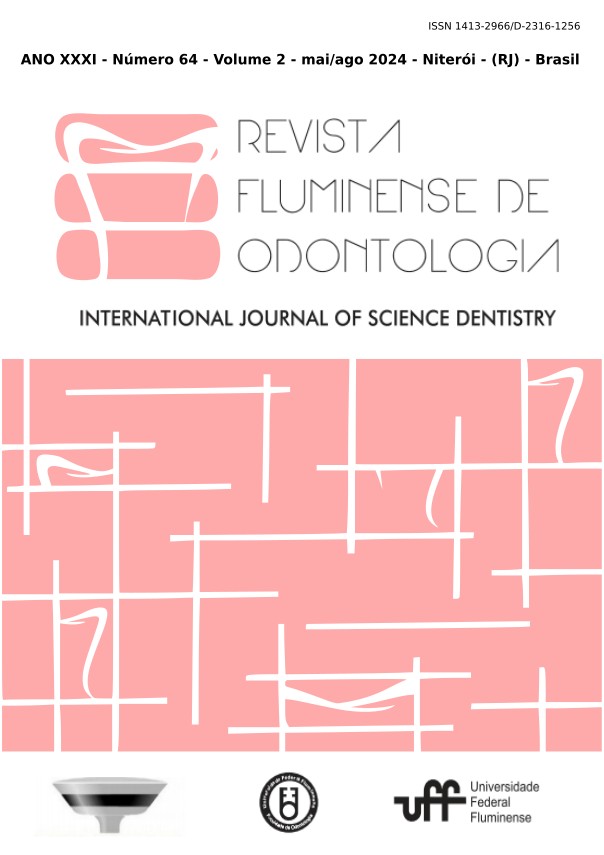QUEILITE ANGULAR EM PACIENTES IDOSOS: ASPECTOS CLÍNICOS, MICROBIOLÓGICOS, FATORES ETIOLÓGICOS E MANEJO TERAPÊUTICO
DOI:
https://doi.org/10.22409/ijosd.v2i64.59765Resumo
Introdução: A queilite angular é uma lesão multifatorial de caráter essencialmente fúngico, que acomete as comissuras labiais e clinicamente se manifesta através de um padrão característico. Em idosos, em decorrência da idade avançada, o surgimento e a persistência da queilite angular ocorre em virtude da perda de dimensão vertical, edentulismo, imunossupressão, aumento da dobra cutânea, próteses mal adaptadas e redução da qualidade de vida. Objetivo: Realizar um levantamento na literatura científica acerca dos aspectos clínicos, microbiológicos, fatores etiológicos e tratamento da queilite angular em pacientes idosos. Métodos: Foram consultadas as bases de dados PubMed, SciELO e LILACS, utilizando os descritores DeCS/MeSH em português e inglês: "idosos", "queilite", “lesão”, "elderly", "cheilitis" e “lesion”. Após o cruzamento com o operador booleano AND, foi realizada apuração e análise, com a inclusão de 21 trabalhos. Para aprofundar a fundamentação teórica, 13 novas referências foram adicionadas, totalizando 34 estudos. Resultados: Clinicamente, a queilite angular se manifesta através de fissuras, eritemas, crostas uni/bilaterais, acompanhada de dor e prurido. A presença dos microrganismos Candida albicans, Staphylococcus aureus e Streptococcus pyogenes são comuns e dificultam no manejo terapêutico desta condição. Dentre as variadas formas de tratamento, destacam-se a Terapia Fotodinâmica antimicrobiana, uso de ácido hialurônico, além de antimicrobianos locais, especialmente os antifúngicos. Considerações finais: Por apresentar aspecto multifatorial e envolver diferentes tipos de microrganismos, seu manejo terapêutico é multimodal. Portanto, para um tratamento adequado, faz-se necessário que o cirurgião-dentista identifique as características clínicas e microbiológicas, além dos fatores etiológicos envolvidos no desenvolvimento da queilite angular.
Palavras-chave: Idosos. Queilite. Lesão.


